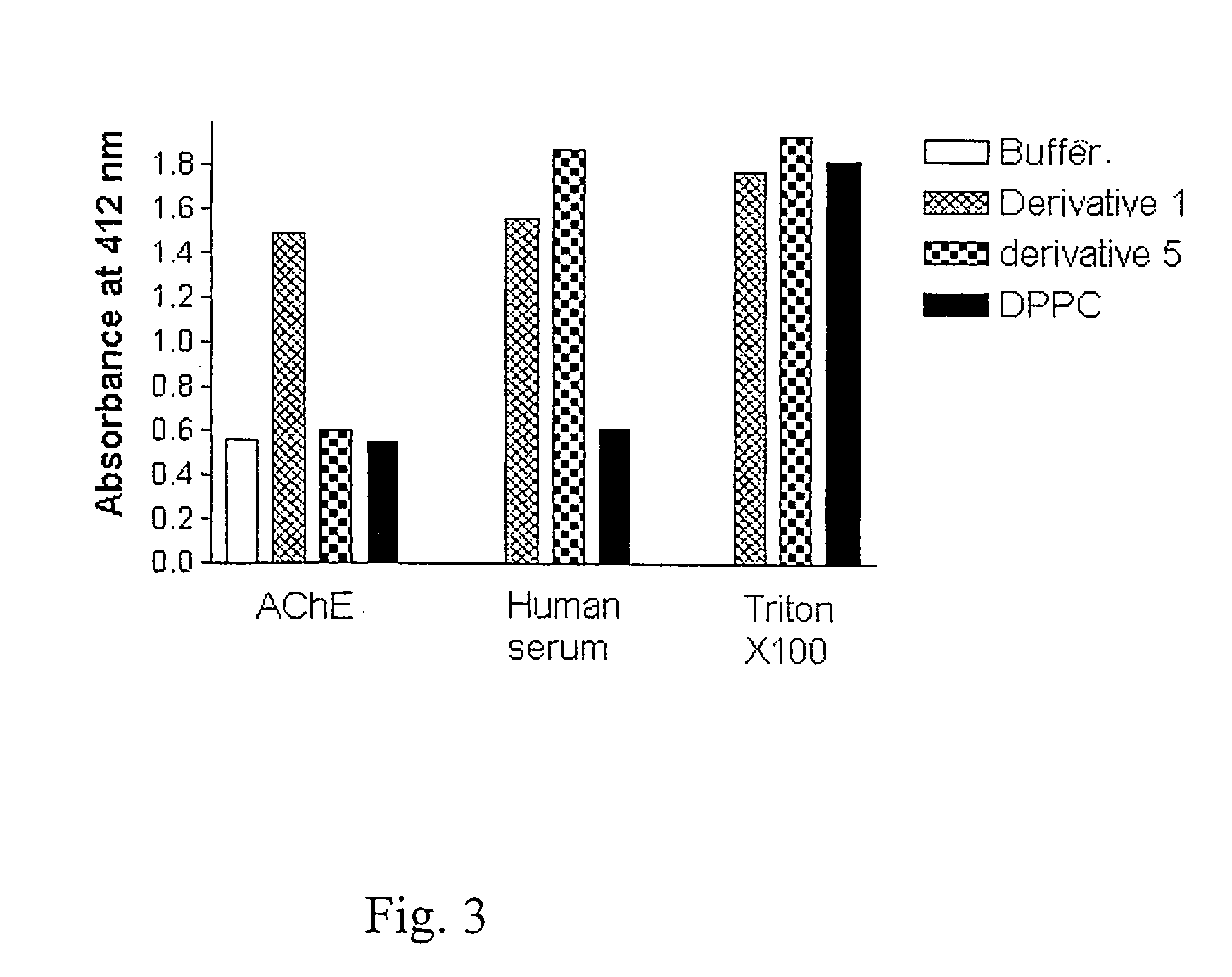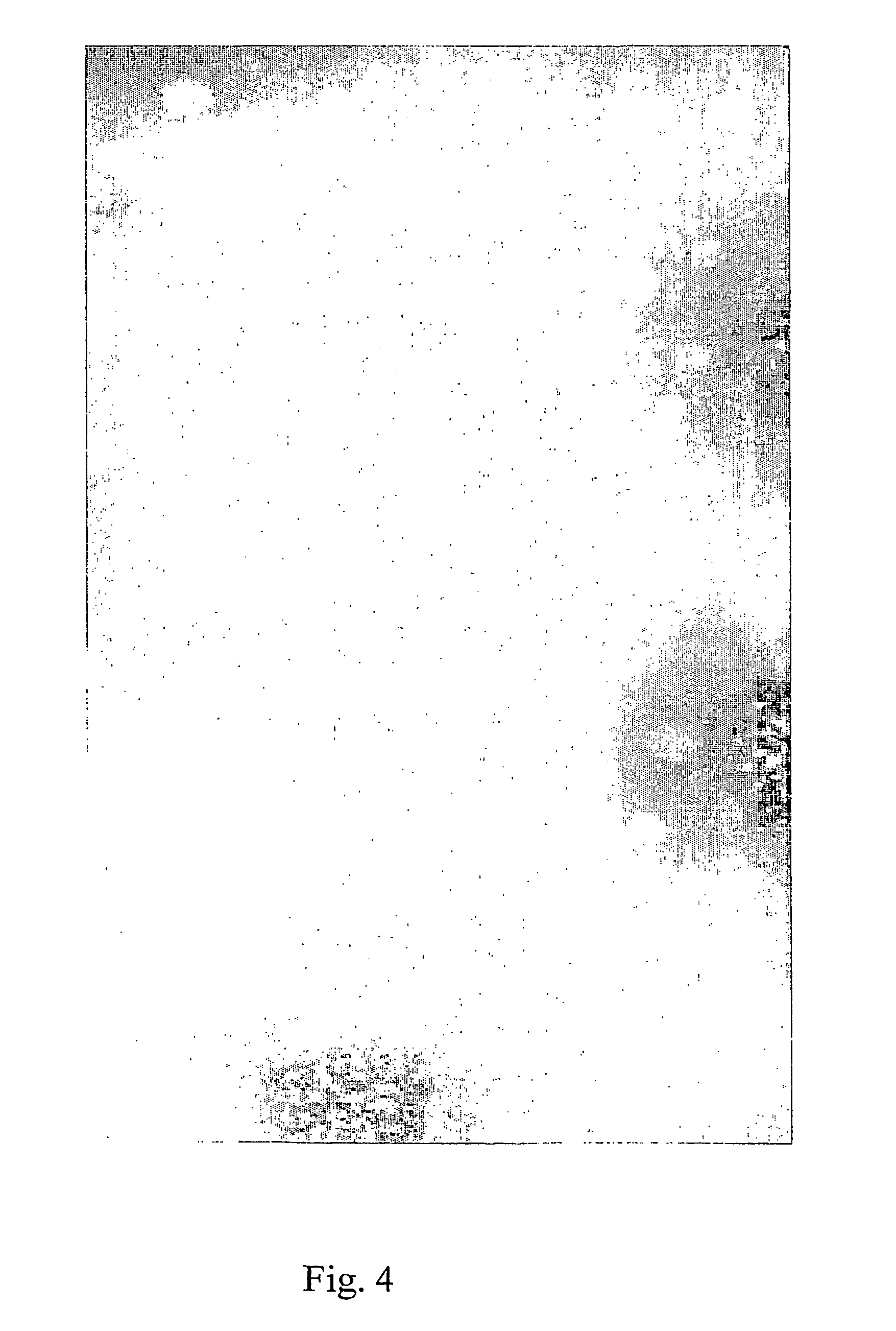Amphiphilic compounds and vesicles liposomes for organ-specified drug targeting
a technology of vesicles and compounds, applied in the direction of drug compositions, fatty acid chemical modifications, metabolic disorders, etc., can solve the problems of vesicles disruption and consequent release of encapsulated drugs, and achieve the effect of increasing the stability of the vesicles
- Summary
- Abstract
- Description
- Claims
- Application Information
AI Technical Summary
Benefits of technology
Problems solved by technology
Method used
Image
Examples
example 1
Synthesis of 13-(2-chloroacetoxy)-12-hydroxyoctadec-9-enoic acid methyl ester (Precursor 1)
[0237] Precursor 1 was prepared in one step from methyl vernolate as shown in Scheme 1 herein and as described in WO 02 / 055011 (Example 4).
example 2
Synthesis of Precursor 2
[0238] Precursor 2 was prepared from Precursor 1 (X═Br) as shown in Scheme 2, as follows: To 0.449 g (1 mmol) of the Precursor 1 (X=Br) in 1 ml of dry acetone, 0.13 g (1 mmol) of 2-dimethylaminoethyl acetate was added and the solution was refluxed for 4 h. The quaternary salt (Rf-0.66) was separated from the reaction mixture by column chromatography using chloroform and methanol (1:1, v / v) as the eluent to give 0.26 g, 45% yield of Precursor 2.
[0239]1H NMR spectrum, δ ppm: 0.8(—CH3), 2.1(CH3—C═O), 3.6 [N+(CH3)2, CH—OH and CH3—O], 4.2 (N+—CH2—CH2), 4.5 (N+—CH2—CH2), 4.9 (CH—O—C═O), 5.4(CH═CH).
[0240]13C NMR, δ ppm: 14.0(CH3), 20.8 (CH3—C═O), 51.4 and 52.6 (N+(CH3)2 and CH3—O), 58.4 and 62.7-63.2 (N+—CH2—CH2—O, N+—CH2—CH2—O, C═O—CH2—N+), 71.3 (CH—OH), 79.9 (CH—O—C═O), 123.2-133.4 (CH═CH), 164.5, 170.0 and 174.3 (C═O).
[0241] Elemental analysis calculated for C27H50NO7Br:Br− 13.74%. Found: 12.27% (content as determined by argentometric titration).
example 3
Synthesis of N,N-ethylene bis (vernolamide)—Precursor 3
[0242] Precursor 3 was prepared either from trivernolin, or from methyl vernolate as shown in Scheme 3 herein, and as described in WO 02 / 055011 (Example 14).
PUM
| Property | Measurement | Unit |
|---|---|---|
| sizes | aaaaa | aaaaa |
| temperature | aaaaa | aaaaa |
| chemical shift | aaaaa | aaaaa |
Abstract
Description
Claims
Application Information
 Login to View More
Login to View More - R&D
- Intellectual Property
- Life Sciences
- Materials
- Tech Scout
- Unparalleled Data Quality
- Higher Quality Content
- 60% Fewer Hallucinations
Browse by: Latest US Patents, China's latest patents, Technical Efficacy Thesaurus, Application Domain, Technology Topic, Popular Technical Reports.
© 2025 PatSnap. All rights reserved.Legal|Privacy policy|Modern Slavery Act Transparency Statement|Sitemap|About US| Contact US: help@patsnap.com



